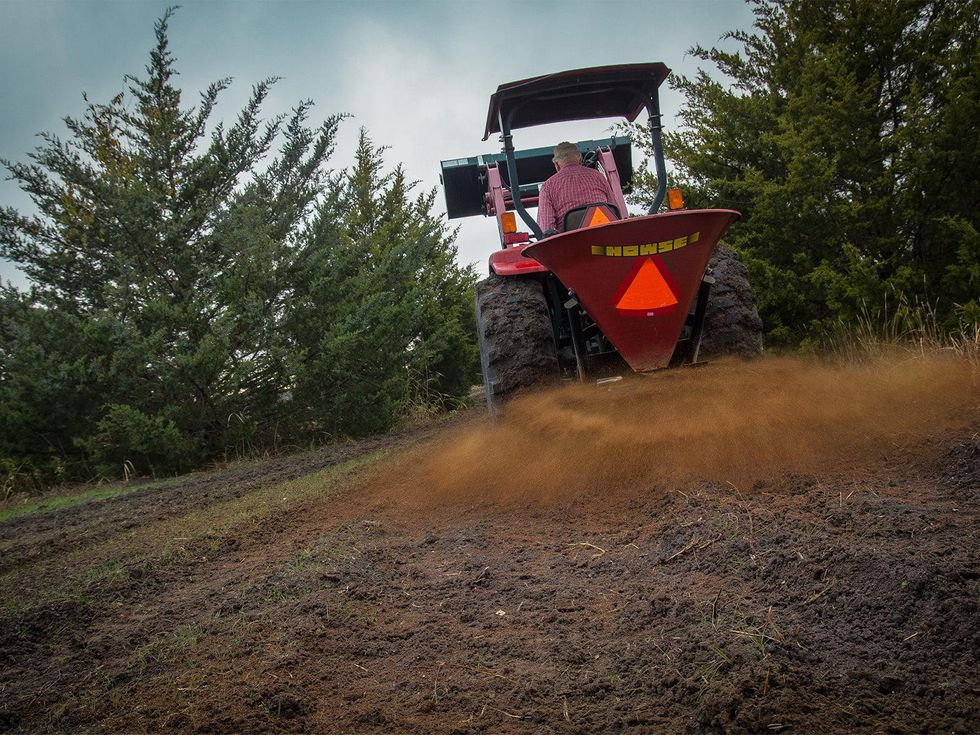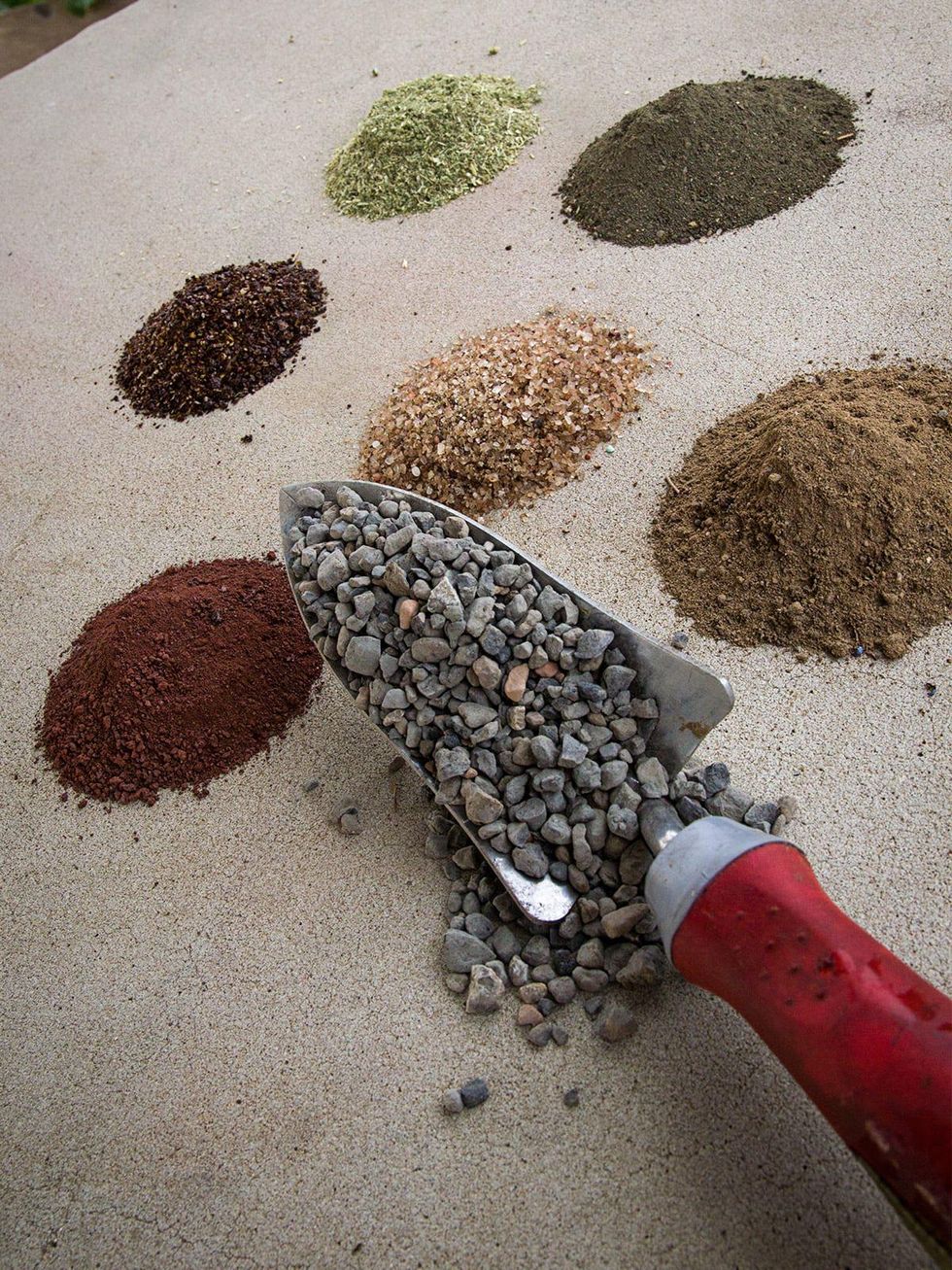The Farmer Diaries
North Texas farmer shares his list of the "dirty 7" for fertile soil
Previously, I assumed that dirt had what it needed for healthy plants without human intervention. But I've learned that a few soil amendments can make farming easier and more productive.
Since I've begun using soil amendments, my crops are better able to endure whatever conditions hit them: drought, bugs, neglect. Most surprising is how much bigger and greener all my plants have turned out. Collard greens grew leaves big enough to sew into a shirt. Zinnias reached chest height. Cantaloupes filled out larger than my head.
But I take the organic route and avoid chemical fertilizers. Those pollute soil with a salty residue that builds up year after year – eventually inhibiting plant growth and killing beneficial organisms.
Since I've begun using soil amendments, my crops are better able to endure whatever conditions hit them: drought, bugs, neglect.
Organic soil amendments improve the vitality and texture of the soil. They slowly break down and nourish plants; a few alter the soil composition to make it more hospitable to crops.
I begin bed prep in November, long before summer crops will be planted in March. That gives the amendments the time they need for microbes and the elements to break them down into a form that plants can use.
Once all dead plants and weeds are cleaned away, I sprinkle each amendment onto the soil and turn it under with a spading fork so everything gets mixed down about four inches deep. Microbes, rainfall and sunlight will do the rest.
I've narrowed my list of essential soil amendments down to seven; think of them as "the dirty seven." Some are added just once; others are added more often.
Here's a breakdown of how I treat each 4-by-8-foot bed in my raised bed garden. To make measurement easier, I've translated the weight recommendations into a how many 12-ounce coffee cups should be added to a bed.
Lava sand
Added only once to a bed when it's first established, lava sand loosens clay soil and helps it to retain moisture. I add 13 (12-ounce) coffee cups to each bed when it's first set up.
Expanded shale
A porous rock that's added only once, expanded shale loosens clay soil and stores water when it's plentiful, then slowly releases it as the soil dries out. I pour an inch layer over the top of the soil in each bed and work it in with the rest of the amendments.
Texas green sand
A source of iron and trace minerals from ancient sea deposits, Texas green sand is added twice the first year, once the second year and every other year afterward. To each bed, I add three 12-ounce coffee cups for a treatment.
Soft rock phosphate
Mined from the same source that supplies industrial agriculture with phosphorous, soft rock phosphate is left in its more natural state. Because it skips the chemical processing that industrial ag puts mined phosphate through, soft rock phosphate does not infuse the soil with phosphorus that can be washed away with rain.
Agricultural runoff from conventional crops pollutes waterways, eventually contributing to what causes the dead zone in the Gulf. In contrast, soft rock phosphate breaks down slowly and stays put in the soil, inert to rainfall. I add half of a 12-ounce coffee cup in the spring and the fall every year.
It should be noted that soil tests always indicate Texas soils to be too high in phosphorous. As organics expert Howard Garrett explains, these tests are wrong because they rely on a harsh acid to separate out a soil's phosphorous content, thus producing an unrealistic reading.
Sul-Po-Mag
A combination of sulfur, potassium and magnesium, Sul-Po-Mag is a mined product that contains a natural source of essential minerals that aid in chlorophyll production and fruit development while improving the flavor of various crops. I add half a 12-ounce coffee cup once a year in the fall.
Dry molasses
Dry molasses feeds soil microorganisms that in turn metabolize organic matter and nutrients into a form that plants can use. Additionally, beneficial microorganisms fed by dry molasses seem to drive out fire ants, grub worms and other garden pests — sort of a pest to our pests. Dry molasses also adds a few trace minerals to the soil. I add three 12-ounce coffee cups to each bed in the spring and fall every year.
Alfalfa meal
When alfalfa is dried and pulverized, it forms a meal that's easily spread in the garden by hand or with a fertilizer spreader. Although it contains other nutrients, I use alfalfa meal as a source of nitrogen for crops. Additionally, alfalfa meal adds organic matter to soil so that over time, it becomes more spongy and light. Alfalfa meal contains a plant growth stimulant called tricontanol, which purportedly makes crops thrive. I add one-and-a-half 12-ounce coffee cups to each bed in spring and fall every year.
I do not add animal feces or slaughterhouse waste. Animal waste can harbor E. coli and salmonella — pathogens that can sicken consumers and kill the reputation of a grower.
Bone meal, blood meal, feather meal and whatever else the factory-farm kill floors hope to dispose of for profit are poor sources of nutrients because they usually contain high amounts of just one element, such as nitrogen or phosphorous — no balancing nutrients. Because of this imbalance, slaughterhouse waste products are prone to overload or burn plants, stunting them or making them fruitless.
I've also never encountered a slaughterhouse waste product that did not smell as horrifying as the conditions that factory farmed animals are forced to endure. I stick with mined and plant-based soil amendments that keep my conscience clean and my reputation as a grower impeccable.




 GymkhanaGymkhana
GymkhanaGymkhana